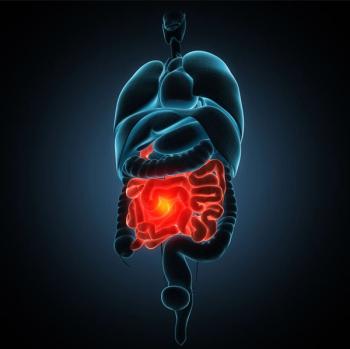
ACG Meeting: Advance the Dx and Rx of GI Disorders
Opportunities to obtain the latest scientific knowledge and institute scientifically sound therapy to maintain the highest quality of patient care abound at the meeting.
The array of options and advances that affect the diagnosis and management of GI disorders continues to increase, according to the American College of Gastroenterology (ACG). Opportunities to obtain the latest scientific knowledge and institute scientifically sound therapy to maintain the highest quality of patient care abound at the ACG Annual Scientific Meeting and Postgraduate Course, held this year in San Diego on October 11-16.
The goal of the
Key aspects of the ACG scientific program include the following:
• The proper use of screening techniques that lead to prevention or early diagnosis of specific disease conditions.
• Advanced and improved endoscopic techniques and practice management tools.
• Gaining knowledge about prevention and treatment options for obesity-which has increased in prevalence from less than 15% in the 1960s to more than 30% and is predicted to reach 75% by 2015-and understanding the importance of patient education.
• Ongoing important developments in diagnostic and medical therapeutic options for inflammatory bowel disease (IBD).
• Improvements in understanding of the pathogenesis and management of motility and functional GI disorders.
• Diagnosis and management challenges related to liver disorders, pancreaticobiliary diseases, diarrheal disorders, and GI bleeding.
• The extreme importance of having an understanding of the pathophysiology, diagnosis, treatment options, and complications of gastroesophageal reflux disease (GERD).
A full schedule of educational offerings includes “Optional Friday Courses” in GI pathophysiology, new developments in GI pharmacotherapy, and practice management.
The “GI Pathophysiology: Application for Clinical Practice Course” will help clinicians gain a better understanding of GI disease processes and their effect on the clinical presentation of patients. Experts will review the underlying causes and clinical implication of diseases frequently seen in practice, including GERD, pancreatic cysts, infectious diarrhea, short bowel syndrome, hepatitis C, and IBD.
The “What’s New in GI Pharmacology Course” will provide an intensive review of GI pharmacology, including comparisons and contrasts between conventional and emerging pharmacological treatment options. Topics include therapies for patients with IBD, a review of appropriate vaccinations and their safety for patients receiving corticosteroids, immunomodulators or biologic agents, new anticoagulant medications, medications for pancreatitis, determining available therapies that are safe and effective for pregnant GI patients, treatment of patients with Clostridium difficile, and hepatitis C therapies.
The “Practice Management Course” will provide up-to-date information about the state of practice management, including trends, changes in regulations and laws, and best practices to effectively manage a practice in the current uncertain environment.
Other course offerings include New Insights on Gluten Intolerance, Diverticular Disease as a Chronic Illness: Evolving Epidemiologic and Clinical Insights, Ischemic Colitis: What is New?, Management of Chronic Abdominal Pain, Pancreatic Cysts, The Pregnant Patient with IBD, Eosinophilic Esophagitis: Guidance on Diagnosis and Treatment, Therapy for Hepatitis C: How to Minimize and Manage Side Effects, Non-alcoholic Fatty Liver Disease, Therapeutic Monitoring Optimizes Outcomes in IBD, and Dietary Intervention and Probiotics in IBD.
About
Newsletter
Enhance your clinical practice with the Patient Care newsletter, offering the latest evidence-based guidelines, diagnostic insights, and treatment strategies for primary care physicians.






















































































































































































































































































